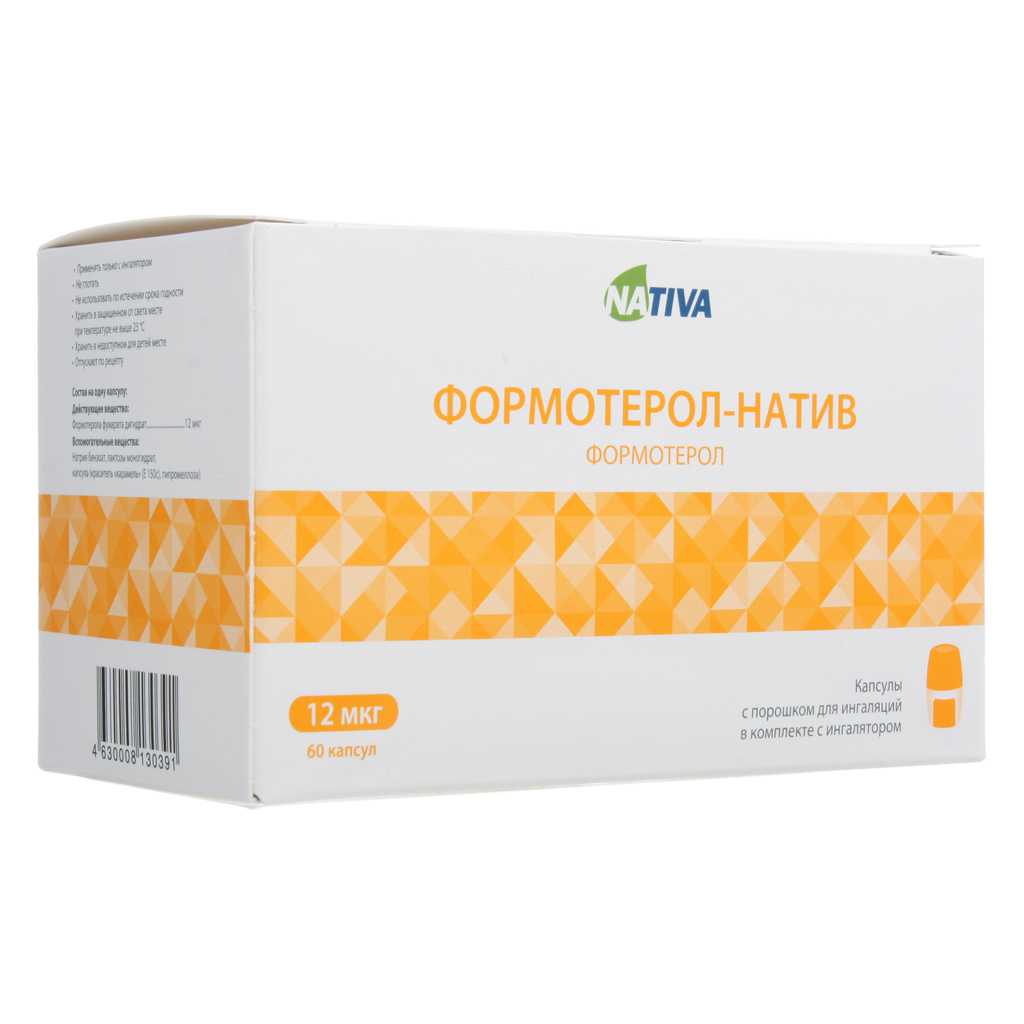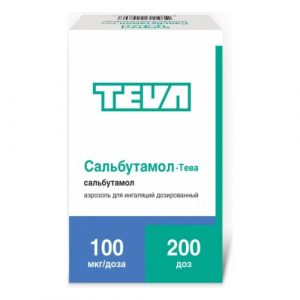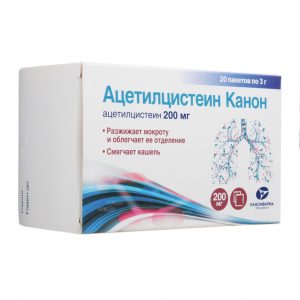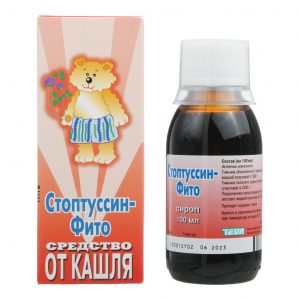Description
Release form
Capsules for inhalation.
Pharmacological action
Pharmacodynamics. Formoterol is a selective 2-adrenergic receptor agonist ( 2-adrenergic agonist). It has a bronchodilatory effect in patients with reversible airway obstruction. The action of the drug occurs quickly (within 1-3 minutes) and persists for 12 hours after inhalation. When using therapeutic doses, the effect on the cardiovascular system is minimal and is noted only in rare cases.
Formoterol inhibits the release of histamine and leukotrienes from mast cells. Animal experiments have shown some anti-inflammatory properties of formoterol, such as the ability to inhibit the development of edema and the accumulation of inflammatory cells.
In experimental animal studies in vitro, racemic formoterol and its (R, R) and (S, S) enantiomers have been shown to be highly selective 2 receptor agonists. The (S, S) enantiomer was 800-1000 times less active than the (R, R) enantiomer and did not adversely affect the activity of the (R, R) enantiomer with respect to the effect on the smooth muscles of the trachea. No pharmacological evidence has been obtained of the benefits of using one of these two enantiomers compared to a racemic mixture.
In studies in humans, formoterol has been shown to effectively prevent bronchospasm caused by inhaled allergens, exercise, cold air, histamine, or methacholine. Since the bronchodilating effect of formoterol remains pronounced for 12 hours after inhalation, the appointment of the drug 2 times a day for long-term maintenance therapy allows in most cases to provide the necessary control of bronchospasm in chronic lung diseases, both during the day and at night.
In patients with chronic obstructive pulmonary disease (COPD) of stable formoterol, used in the form of inhalations in doses of 12 or 24 mcg 2 times a day is accompanied by an improvement in the quality of life parameters.
Pharmacokinetics. The therapeutic dose range of formoterol is from 12 mcg to 24 mcg 2 times a day. Pharmacokinetics of formoterol were obtained in healthy volunteers after inhalation of formoterol in doses above the recommended range and in patients with COPD after inhalation of formoterol in therapeutic doses.
Suction. After a single inhalation of formoterol in a dose of 120 μg to healthy volunteers, formoterol is rapidly absorbed into the blood plasma, the maximum concentration of formoterol in the blood plasma (Cmax) is 266 pmol / L and is reached within 5 minutes after inhalation. In patients with COPD who received formoterol at a dose of 12 or 24 mcg 2 times a day for 12 weeks, plasma formoterol concentrations, measured 10 minutes, 2 hours and 6 hours after inhalation, were in the ranges of 11.5-25.7 pmol / L and 23.3-50.3 pmol / L, respectively.
In studies that studied the total excretion of formoterol and its (R, R) and (S, S) urine enantiomers, it was shown that the amount of formoterol in the systemic circulation increases in proportion to the inhaled dose (12-96 μg).
After inhaled administration of formoterol at a dose of 12 or 24 mcg 2 times a day for 12 weeks, excretion of unchanged formoterol in the urine in patients with bronchial asthma (BA) increased by 63-73%, and in patients with COPD by 19-38%. This indicates some cumulation of formoterol in blood plasma after repeated inhalations. In this case, there was no greater cumulation of one of the enantiomers of formoterol compared to the other after repeated inhalations.
Most of the formoterol used with the inhaler is swallowed and then absorbed from the gastrointestinal tract (GIT). When 80 μg of 3H-labeled formoterol was administered, two healthy volunteers absorbed at least 65% of formoterol.
distribution. The binding of formoterol to plasma proteins is 61-64%, the binding to serum albumin is 34%. In the range of concentrations observed after the use of therapeutic doses of the drug, saturation of the binding sites is not achieved.
Metabolism. The main pathway of formoterol metabolism is direct conjugation with glucuronic acid. Another metabolic pathway is O-demethylation followed by conjugation with glucuronic acid (glucuronidation).
Significant metabolic pathways include conjugation of formoterol with sulfate followed by deformylation. Many isoenzymes are involved in the processes of glucuronidation (UGT1A1, 1A3, 1A6, 1A7, 1A8, 1A9, 1A10, 2B7 and 2B15) and O-demethylation (CYP2D6, 2C19, 2C9 and 2A6) of formoterol, which suggests a low probability of drug interaction or an isoenzyme involved in the metabolism of formoterol. At therapeutic concentrations, formoterol does not inhibit isoenzymes of the cytochrome P450 system.
Withdrawal. When taking formoterol at a dose of 12 or 24 mcg 2 times a day for 12 weeks in an unchanged form with urine, 10% and 15-18% of the total dose in patients with asthma are 7% and 6-9% of the total dose, respectively, COPD patients.
Calculated shares (R, R) and (S, S) enantiomers of unchanged formoterol in the urine are 40% and 60%, respectively, after a single dose of formoterol (12-120 μg) in healthy volunteers and after single and repeated doses of formoterol in patients with AD.
The active substance and its metabolites are completely excreted from the body about 2/3 of the inside dose is excreted in the urine, 1/3 – with feces. The renal clearance of formoterol is 150 ml / min.
In healthy volunteers, the final half-life of formoterol from plasma after a single inhalation of the drug formoterol in a dose of 120 μg is 10 hours, the final half-lives of the (R, R) and (S, S) enantiomers calculated by urine excretion are 13.9 and 12 , 3 hours respectively.
Pharmacokinetics in selected patient groups. Floor. After adjusting for body weight, the pharmacokinetic parameters of formoterol in men and women do not have significant differences.
Elderly patients (over 65 years old). Data in favor of the need to change the dosage of formoterol in patients over 65 years of age compared with younger patients have not been received.
Patients with impaired liver and / or kidney function. The pharmacokinetics of formoterol in patients with impaired liver and / or kidney function has not been studied.
Indications
Prevention and treatment of bronchial obstruction in patients with bronchial asthma (AD) as an adjunct to inhaled glucocorticosteroid therapy.
Prevention of bronchospasm caused by inhalation of allergens, cold air or exercise as an adjunct to inhaled glucocorticosteroid therapy.
Prevention and treatment of disorders of bronchial obstruction in patients with chronic obstructive pulmonary disease (COPD), in the presence of both reversible and irreversible bronchial obstruction, chronic bronchitis and emphysema.
Contraindications
Hypersensitivity and / or intolerance to any of the components of the drug.
Age to 18 years.
Breastfeeding.
Rare hereditary diseases such as lactose intolerance, lactase deficiency or glucose-galactose malabsorption.
Caution. If you have one of these diseases, be sure to consult your doctor before using the drug. Extreme caution when using the drug Formoterol-native (especially in terms of dose reduction) and careful monitoring of patients is required in the presence of the following concomitant diseases: coronary heart disease, heart rhythm and conduction disorders, especially atrioventricular block III degree severe heart failure, idiopathic hypertrophic subaortic stenosis, severe the degree of arterial hypertension aneurysm of any location pheochromocytoma ketoacidosis hypertrophic st manual cardiomyopathy thyrotoxicosis known or suspected prolongation of the QTc interval (QT corrected> 0.44 sec) taking into account the hyperglycemic effect characteristic of 2-adrenergic agonists, in patients with diabetes taking Formoterol-native, additional regular monitoring of blood glucose concentration is recommended.
Composition
Active ingredient: 12 mcg formoterol fumarate dihydrate.
Dosage and administration
Formoterol-native is intended for inhalation use in patients over the age of 18 years. The drug is not intended for oral administration.
The dose of Formoterol-native is selected individually depending on the needs of the patient. Use the lowest dose that provides a therapeutic effect. When achieving control of symptoms of bronchial asthma during therapy with Formoterol-native, it is necessary to consider the possibility of a gradual reduction in the dose of the drug. Reducing the dose of Formoterol-native is carried out under regular medical supervision of the patient.
The drug is a capsule with powder for inhalation, which should be used only with the help of a special device – the inhaler “Inhaler CDM ®”, which is included in the package.
Bronchial asthma. The dose of Formoterol-native for regular maintenance therapy is 12-24 mcg (contents of 1-2 capsules) 2 times a day. Formoterol native should be used only as an adjunct therapy for inhaled glucocorticosteroids (GCS). Do not exceed the maximum recommended dose of 48 mcg (4 capsules) per day. Given that the maximum daily dose of Formoterol-native is 48 mcg, if necessary, you can additionally apply 12-24 mcg per day to alleviate the symptoms of bronchial asthma.
If the need for additional doses of Formoterol-Nativ ceases to be episodic (for example, becomes more frequent than 2 days a week), this may indicate a worsening of the course of bronchial asthma, you should consult a doctor. Against the background of exacerbation of bronchial asthma, one should not start treatment with Formoterol-native or change the dosage of the drug. Formoterol-native should not be used to stop acute attacks of bronchial asthma.
Prevention of bronchospasm caused by physical exertion or the inevitable exposure to a known allergen. Formoterol-native should be used at a dose of 12 mcg (contents of 1 capsule) 15 minutes before the alleged contact with the allergen or before exercise. Additional inhalations of the drug should not be carried out over the next 12 hours.
Prevention of severe bronchospasm. Patients with a history of severe bronchospasm may need a single inhalation at a dose of 24 mcg (contents of 2 capsules).
COPD The dose of Formoterol-native for regular maintenance treatment of COPD is 12-24 mcg (contents of 1-2 capsules) 2 times a day.
Inhalation instructions. In order to ensure the correct use of the drug, a doctor or other medical professional should: 1. warn the patient that the capsules are intended for inhalation use only and are not intended for swallowing
2. explain to the patient that capsules with powder for inhalation should be used only with the Inhaler CDM ®
3. show the patient how to use the inhaler. Remove the capsule from the cell packaging immediately before use.
Inhaler CDM ® Inhaler Instructions for Use. Powder Inhaler CDM ® Inhaler is a plastic device with a movable top and a retractable capsule compartment, about 6 cm high. CDM ® Inhaler is a single dose inhaler that allows you to dose and inhale the drug in very small doses. The drug Formoterol native enters the respiratory tract of the patient along with air flows when performing an active breath through the mouthpiece of the device. The Inhaler CDM ® is very easy to use. Follow the step-by-step instructions below: Step 1. Remove the transparent cap from the CDM ® Inhaler, as shown in Figure 1.
Step 2. Hold the device firmly with one hand, with the index and thumb of the other hand, open the capsule compartment, as shown in fig. 2. To do this, press the PUSH in the moving part of the CDM ® Inhaler with your index finger, sliding the compartment in the opposite direction.
Step 3. While holding the device with one hand, insert the capsule with the drug into the compartment slot (Fig. 3).
Step 4. Make sure the capsule is correctly inserted into the slot (Fig. 4).
Step 5. While holding the CDM ® Inhaler in an upright position, close the compartment by pushing the thumb in the opposite direction until it stops, until you hear a click (Fig. 5).
Step 6. Hold the Inhaler CDM ® device vertically (Figure 6).
Step 7. Make it operational, as shown in fig. 7. To do this, press the mouthpiece with force so that the arrow on the case disappears beyond the boundaries of the lower part of the device to the upper line. Then release the mouthpiece to return it to its original position. Thus, you will pierce the capsule, allowing the drug to enter the mouth of the mouthpiece. Warning: because of the destruction of the gelatin capsule, small pieces of gelatin as a result of inhalation can get into the mouth or throat. In order to minimize this phenomenon, do not puncture the capsule more than 1 time.
Step 8. Warning: before inhalation, exhale (Fig. 8). Do not exhale through the mouthpiece!
Step 9. Carefully squeeze the Inhaler CDM ® mouthpiece with your teeth, grip it tightly with your lips and take a deep and strong breath through the mouth (Fig. 9). You will hear a vibrating sound inside the capsule compartment made by the capsule as the drug rotates and disperses. Attention: the mouthpiece must not be chewed and strongly compressed by the teeth! Do not press the mouthpiece when inhaled. This may block the movement of the capsule. Hold your breath for approximately 10 seconds or longer as much as possible. Remove the inhaler from the mouth. Breathe out slowly. Then breathe normally. Repeat steps 8 9 again to ensure that you are breathing in a dose.
Step 10. After inhalation, open the capsule compartment (step 2), remove the empty capsule, and then close it as shown in fig. 5. Caution: when carrying out inhalation, try not to block the openings located on the sides of the mouthpiece. This can interfere with the free movement of air inside the inhaler, thereby reducing the dispersion of the contents of the capsule.
Always close the CDM ® Inhaler tightly with a cap after use, this will keep the mouthpiece clean. Regularly (once a week), clean the mouthpiece from the outside with a dry cloth. There are separate reports of patients accidentally swallowing whole capsules of the drug without using an inhalation device. Most of these cases are not associated with the development of adverse events. The medical professional must explain to the patient how to use the drug correctly, especially if, after inhalation, the patient does not have improved breathing.
Side effects
Adverse reactions are distributed according to the frequency of occurrence. The following criteria were used to evaluate the frequency: very often (> 1/10), often (from 1/100 to 1/10), infrequently (from 1/1000 to 1/100), rarely (from 1/10000 to 1/1000 ), very rarely (<1/10000), (including individual messages). Infectious and parasitic diseases: often – pharyngitis, acute respiratory viral infection. Immune system disorders: very rarely – anaphylactic reactions, urticaria, angioedema (Quincke’s edema), itching, rash. Disorders from metabolism and nutrition: very rarely – metabolic acidosis. Mental disorders: infrequently – agitation, anxiety, increased irritability, insomnia very rarely – increased fatigue. Disorders of the nervous system: often – headache, tremors, infrequently dizziness, very rarely – a change in taste. Heart abnormalities: often – palpitations, chest pain infrequently – tachycardia is very rare – peripheral edema, angina pectoris, cardiac arrhythmias (including atrial fibrillation, ventricular extrasystoles, tachyarrhythmia). Vascular disorders: very rarely – lowering blood pressure (hypotension), increased blood pressure (hypertension). Disorders of the respiratory system, chest and mediastinal organs: often – sinusitis, increased sputum production infrequently – bronchospasm, including paradoxical, dysphonia very rarely – cough. Disorders of the gastrointestinal tract: infrequently – dryness of the oral mucosa is very rare – nausea. Violations of the musculoskeletal and connective tissue: often – back pain, leg cramps infrequently – muscle spasm, myalgia. General disorders and disorders at the injection site: often – fever infrequently – irritation of the mucous membrane of the pharynx and larynx. Laboratory and instrumental data: infrequently – flattening or inversion of the T wave, depression of the ST segment, lengthening of the QT interval on the electrocardiogram is very rare – hypokalemia, hyperglycemia. If any of the adverse reactions indicated in the instructions are aggravated, or you notice any other adverse reactions not listed in the instructions, notify your doctor. Overdose Symptoms. An overdose of formoterol is likely to lead to the development of phenomena characteristic of an overdose of? 2-adrenergic agonists or an increase in the manifestation of side effects: pain behind the breastbone, palpitations, tachycardia up to 200 udmin, ventricular arrhythmias, increased or decreased blood pressure, dry mouth, nausea , vomiting, headache, dizziness, tremor, nervousness, weakness, anxiety, drowsiness, metabolic acidosis, hypokalemia, hyperglycemia, convulsions. As with all inhaled? 2-adrenergic agonists, with an overdose of formoterol, cardiac arrest and death are possible. treatment. Supportive and symptomatic therapy is indicated. In severe cases, hospitalization is required. The use of cardioselective? 2-blockers can be considered, but only under close medical supervision, subject to extreme caution, since the use of such drugs can cause bronchospasm. Recommended monitoring of cardiac performance. Storage conditions In the dark place at a temperature of no higher than 25 ° C. Keep out of the reach of children. Shelf life is 2 years. Do not use after the expiration date indicated on the package. active substance Formoterol Terms and conditions prescription lekarstvennaja form powder for inhalation Prescribing For children as prescribed by the doctor Indications Bronchospasm, Nasmus, Bronchial asthma27faf2727af27 obuchaemosty, bronchitis, asthma Bronhialynaya




